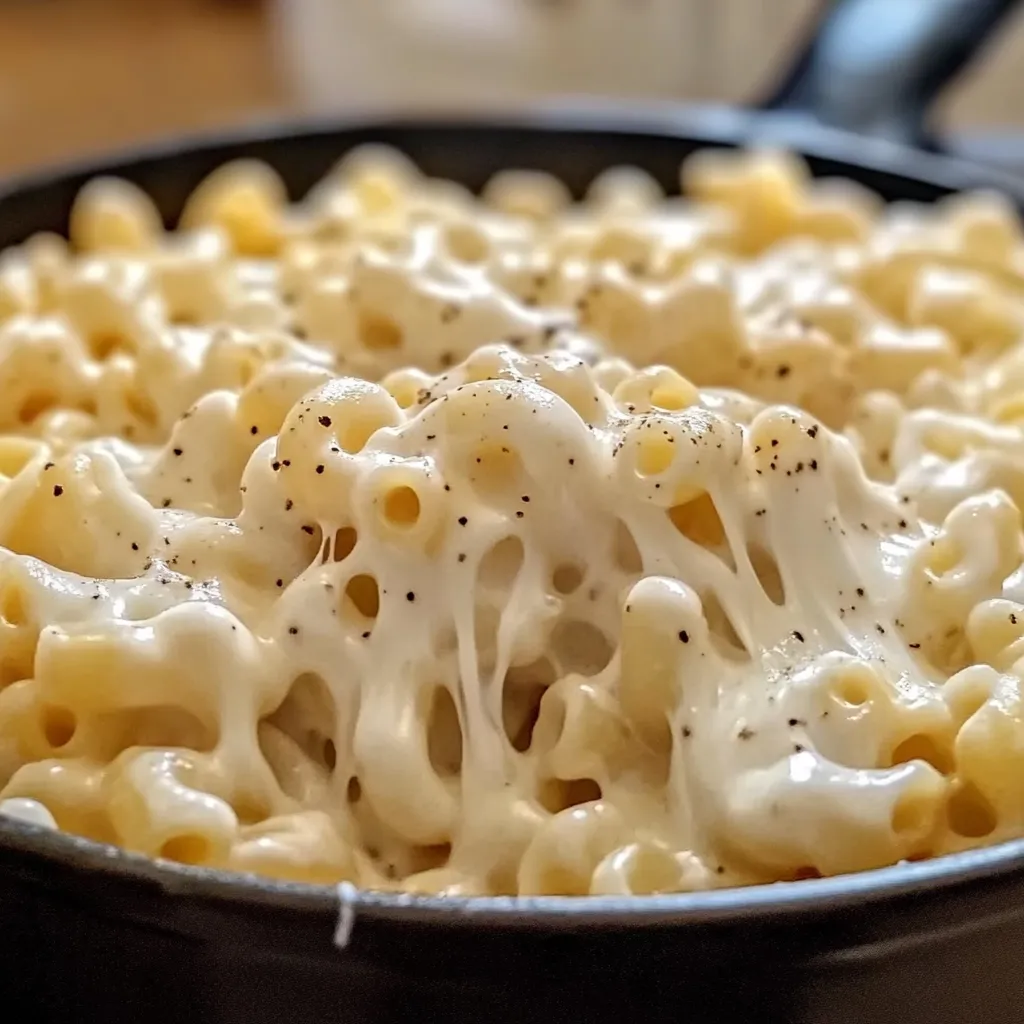A Bowl of Comfort – The Charm of White Cheddar Mac and Cheese
Few dishes capture the feeling of pure comfort like a warm bowl of mac and cheese. But when you use white cheddar instead of the usual orange kind, the flavor transforms from simple to sophisticated. This White Cheddar Mac and Cheese is luxuriously creamy, rich, and just a little tangy. It’s the kind of meal that feels right for both a cozy weeknight dinner and a casual gathering with friends.
I first made this version on a cold evening when I wanted something indulgent yet a bit elevated. The aroma of bubbling cheese and butter filled the kitchen—it’s hard not to feel happy when that happens.
What You’ll Need to Make This Creamy Pasta Favorite
This recipe relies on a few quality ingredients. Using freshly grated cheese makes all the difference—pre-shredded varieties don’t melt as smoothly.
Ingredients:
- 1 pound cavatappi pasta (or elbow macaroni, shells)
- ½ cup unsalted butter
- ½ cup all-purpose flour
- 4 cups whole milk (or 2 cups milk + 2 cups heavy cream)
- 16 ounces white cheddar cheese, freshly grated (about 4 cups)
- ½ teaspoon garlic powder
- Salt and black pepper to taste
- ½ teaspoon smoked paprika (optional)
- ½ teaspoon dry mustard powder (optional)
- ½ cup grated parmesan (optional)
- ½ cup crispy bacon bits (optional)
Preparing the Pasta Base for the Perfect Texture
Start by bringing a large pot of salted water to a boil. Add your pasta and cook it until just al dente—it will soften slightly once mixed with the cheese sauce. Drain well but don’t rinse; you want the starch to help the sauce cling beautifully. Set it aside while you make the roux.
Building the Roux – The Secret to a Silky Cheese Sauce
In a large saucepan, melt the butter over medium heat until it’s smooth and slightly foamy. Whisk in the flour and cook for 1–2 minutes. You’ll smell a faint nutty aroma as the raw flour cooks out, which is exactly what you want.
Next, slowly pour in the milk (or milk and cream mixture), whisking constantly to prevent lumps. Keep whisking until the sauce thickens and coats the back of a spoon. This forms the creamy base that gives the dish its luscious texture.
Melting in the Cheese – Creating That Signature Creaminess
Lower the heat to a gentle simmer, then start adding the shredded white cheddar a handful at a time. Stir until each addition melts fully before adding more. The sauce will turn smooth, velvety, and glossy.
At this stage, stir in garlic powder, salt, black pepper, and, if you like, smoked paprika or dry mustard for a subtle kick. A little parmesan adds depth, while bacon bits make it delightfully smoky and savory. I love watching the sauce come together—it’s mesmerizing.
Combining the Pasta and Sauce – Bringing It All Together
Pour the drained pasta into the cheese sauce and stir gently until every piece is coated in that creamy goodness. If the sauce feels too thick, splash in a bit of warm milk until it loosens up.
Taste and adjust the seasoning to your liking. This is your comfort food moment—make it as cheesy or peppery as you please.
Tips for Smooth, Non-Grainy Mac and Cheese
- Grate your own cheese. Pre-shredded cheese contains anti-caking agents that can make the sauce grainy.
- Don’t overheat the sauce. Cheese melts best on low heat—too hot and it can separate.
- Use whole milk or cream. Lower-fat milk won’t yield the same richness.
- Add cheese gradually. Rushing this step can lead to clumps instead of smooth sauce.
These details might seem small, but they’re the key to that restaurant-quality texture.
Optional Baked Version for a Golden Crust
If you prefer a baked mac and cheese with a crispy top, transfer the mixture to a buttered baking dish. Sprinkle breadcrumbs and extra cheese over the top, then bake at 375°F (190°C) for 15–20 minutes, until bubbling and golden. The contrast between the creamy interior and crunchy topping is irresistible.
Serving and Storing Your White Cheddar Mac and Cheese
Serve your mac and cheese piping hot with a dusting of black pepper or extra shredded cheese on top. It pairs perfectly with a crisp green salad or roasted vegetables.
If you have leftovers, let them cool completely before transferring to an airtight container. They’ll keep for up to three days in the fridge. Reheat gently on the stove with a splash of milk to revive the creaminess.
Flavor Variations to Try – Make It Your Own
You can personalize this recipe endlessly. Try adding sautéed mushrooms, caramelized onions, or a handful of spinach for extra flavor. Swap white cheddar for Gruyère or fontina for a gourmet twist. A drizzle of truffle oil also takes it up a notch for special occasions.
For a smoky flavor, mix in cooked bacon or diced ham. Or make it spicy with a pinch of cayenne or chopped jalapeños. It’s one of those recipes that welcomes creativity.
Nutrition Snapshot – Indulgent but Worth Every Bite
White Cheddar Mac and Cheese isn’t diet food, but it’s comfort in its purest form. Each serving delivers protein, calcium, and a good dose of happiness. When made with real ingredients and enjoyed in moderation, it’s a well-earned indulgence that satisfies every craving.
Creamy Questions Answered – Your Mac and Cheese FAQ Corner
Why use white cheddar instead of yellow?
White cheddar has a sharper, cleaner flavor that gives the dish a rich but balanced taste without added coloring.
Can I make it ahead of time?
Yes! Prepare the sauce and pasta separately, then combine just before serving or baking. Reheat gently to keep the sauce creamy.
How can I make it extra cheesy?
Add a bit more cheddar or a blend of cheeses like mozzarella or Monterey Jack for extra meltiness.
What’s the best pasta shape?
Cavatappi holds the sauce beautifully, but elbows, shells, or rotini work just as well.
Can I freeze it?
Yes, though it’s best fresh. If freezing, let it cool completely, then store in a sealed container for up to a month. Reheat slowly with a bit of milk.
This White Cheddar Mac and Cheese is proof that simple ingredients can create something unforgettable. It’s creamy, cozy, and satisfying—the kind of meal that brings everyone back to the table for seconds.


